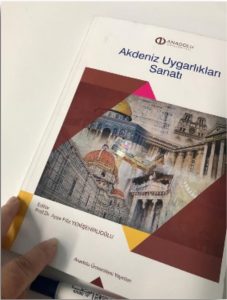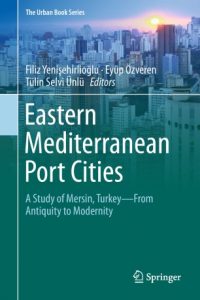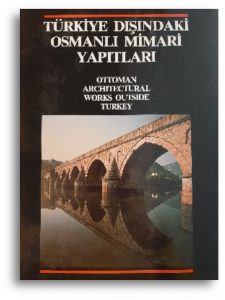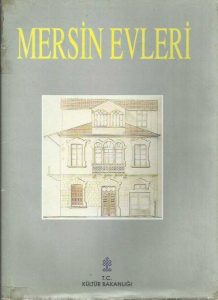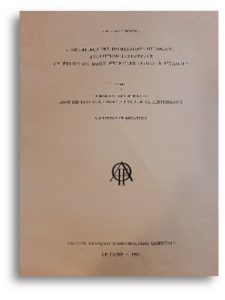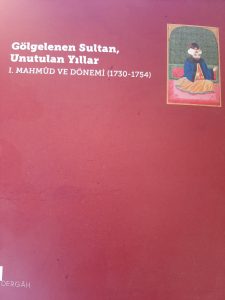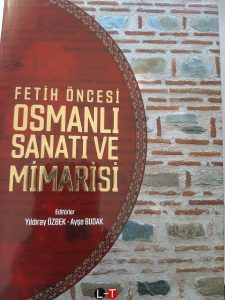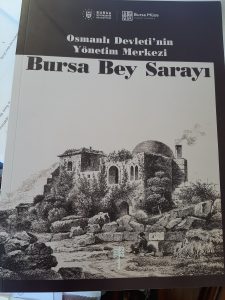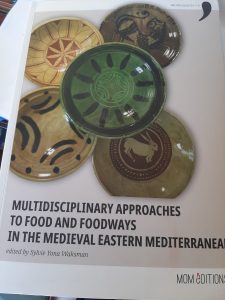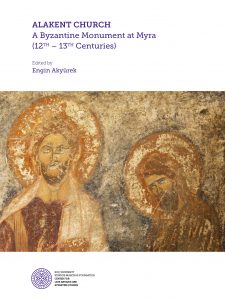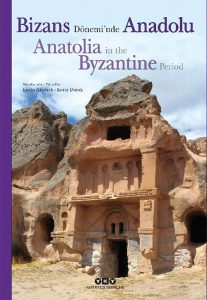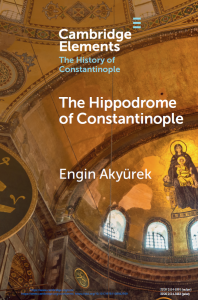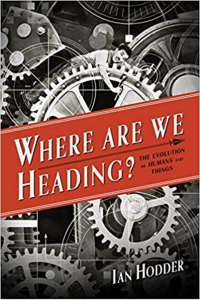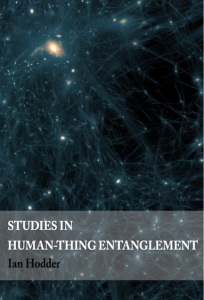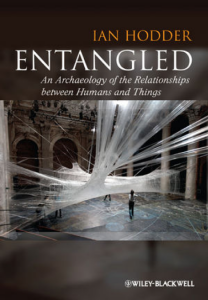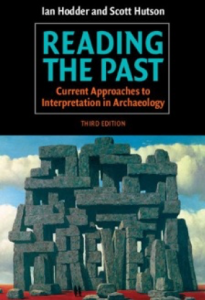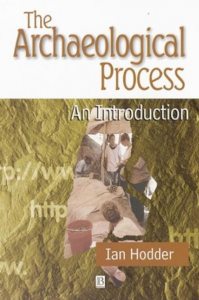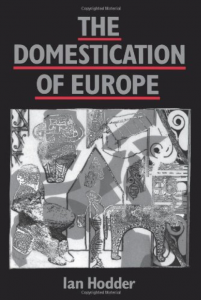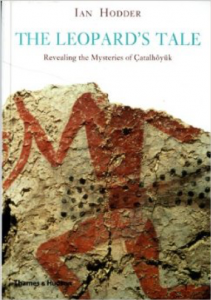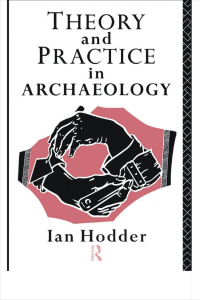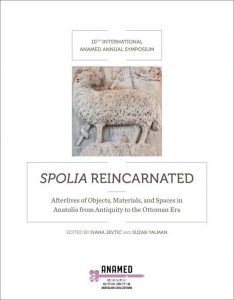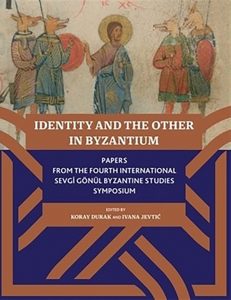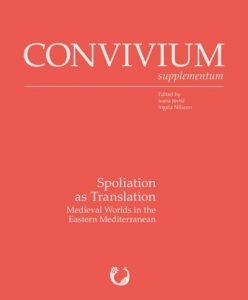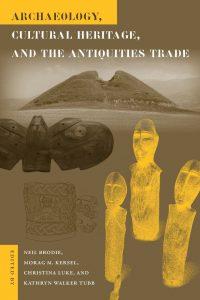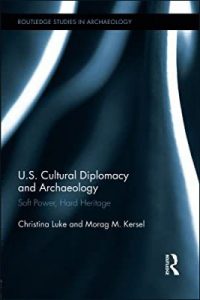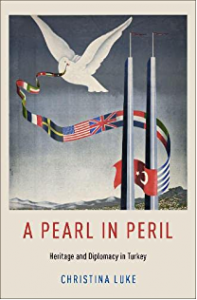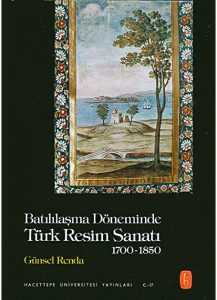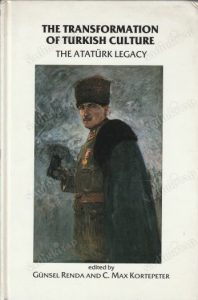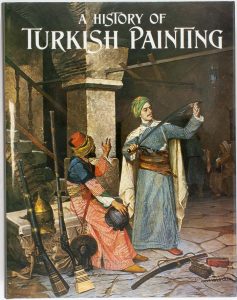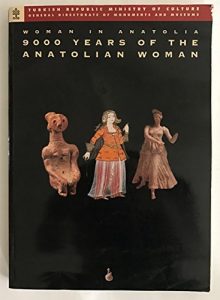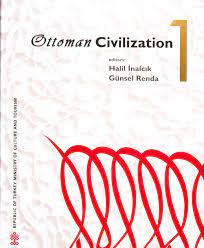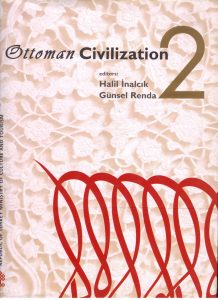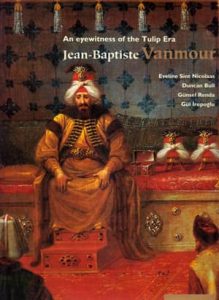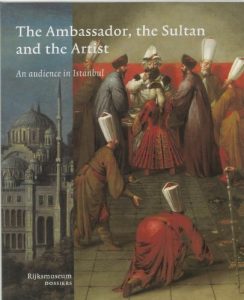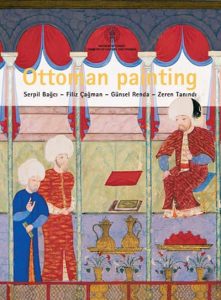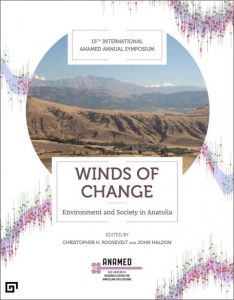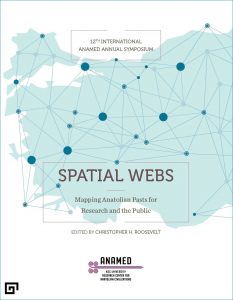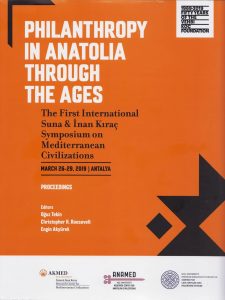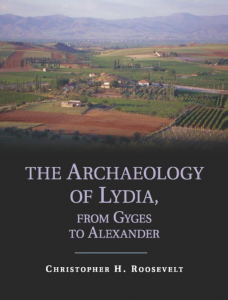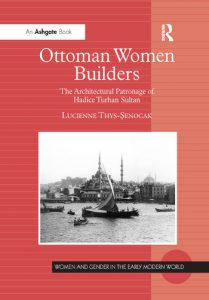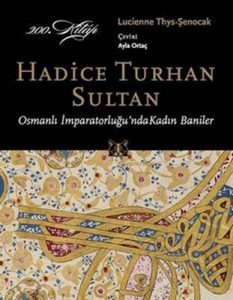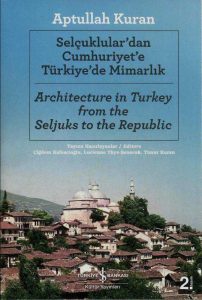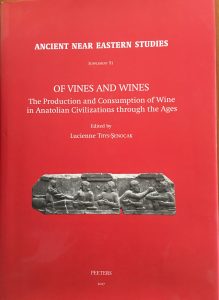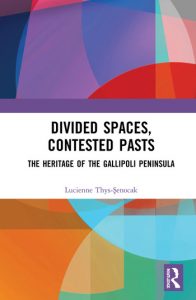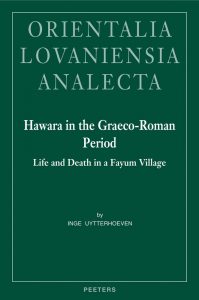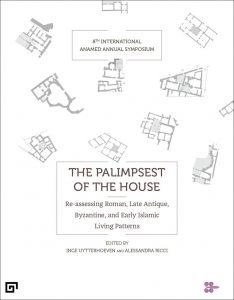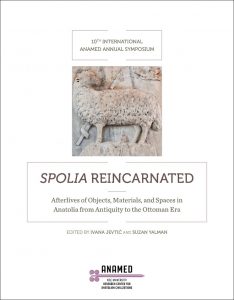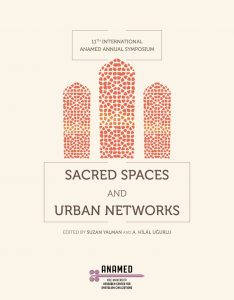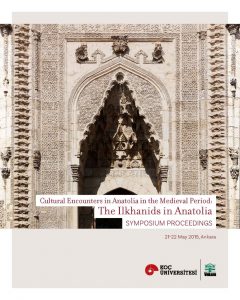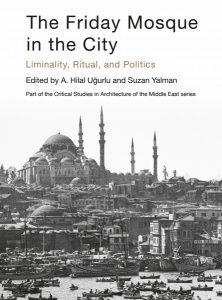My research interest is Byzantine history of art, mainly focusing on the Byzantine architecture and monumental painting. I’ve worked on two archaeological field research projects as the Byzantine-era specialist:
“The Bey Dağları Archaeological Field Survey” (1999-2009),
“Myra-Andriake Excavations” (2009-continuing).
Selected Publications
Monographs and Edited Volumes
“Byzantine Art History in Modern Turkey” in Perceptions of the Past in the Turkish Republic: Classical and Byzantine Periods, Ancient Near Eastern Studies, Supplement 31, (Ed., S. Redford, N. Ergin), Peeters, Leuven – Paris – Walpole, MA, 2010, 205- 224.
“From Fishing Village to Imperial Capital” in İstanbul, Sultan of Lands and Seas, (ed., F. Özdem, transl. P. M. Işın), Yapı Kredi Yayınları, İstanbul 2009, 45- 91.
“Funeral Ritual in the Parecclesion of Chora Church” in Byzantine Constantinople, Monuments, Topography and Everyday Life, (N. Necipoğlu, ed.), Leiden 2001, 89–104.
“Andriake: The Port of Myra in Late Antiquity” in Trade in Byzantium, Papers from The Third International Sevgi Gönül Byzantine Studies Symposium, Eds. P. Magdalino – N. Necipoğlu (İstanbul 2016), 465-487.
“Myra, The City of St. Nicholas” in En Orient et en Occident, le culte de saint Nicolas en Europe, Eds., V. Gazeau, C. Guyon, C. Vincent, (Paris 2015), 21-37.
“Dominican Painting in Palaiologan Constantinople: The Frescoes of the Arap Camii (Church of S. Domenico) in Galata” in Kariye Camii, Yeniden / The Kariye Camii Reconsidered, (ed., H.A. Klein, R.G. Ousterhout, B. Pitarakis), İstanbul 2011, 328-341, 316-326.
“The Medieval Church of Trebenna and its Pictorial Program: A Vanishing Monument in its Historical Context” Cahiers Archéologiques, 52 (2009), 45–55.
“Palamutdüzü: A Medieval Byzantine Village Settlement in the Bey Mountains”, ADALYA, XI (2008), 295–319.
Publications
Monographs and Edited Books
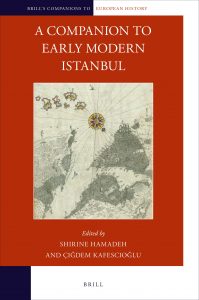
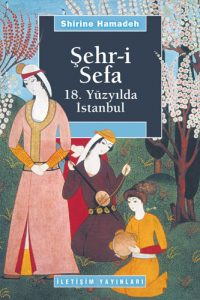
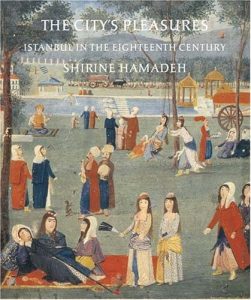
Şehr-i Sefa: Onsekizinci Yüzyılda İstanbul (Istanbul: İletişim Yayınları, 2010). https://iletisim.com.tr/kitap/sehr-i-sefa/8311
The City’s Pleasures: Istanbul in the Eighteenth Century (Seattle and London: University of Washington Press, 2007). https://uwapress.uw.edu/book/9780295986678/the-citys-pleasures/
Select Peer-Reviewed Chapters and Journal Articles:
“Early Modern Istanbul,” with Çiğdem Kafescioğlu, in A Companion to Early Modern Istanbul, edited by S. Hamadeh and Ç. Kafescioğlu, 1-24 (Leiden: Brill, 2021).
“Reşat Ekrem Koçu and İstanbul Ansiklopedisi: Writing on Place,” with Çiğdem Kafescioğlu, in Festschrift in Honor of Cemal Kafadar, edited by R. Goshgarian, I. Khury-Makdisi and A. Yaycioğlu, 495-519 (Chicago: Academic Press, forthcoming Spring 2022).
“Invisible City: Istanbul’s Migrants and the Politics of Space,” Eighteenth-Century Studies 50/2 (Winter 2017): 173-93.
“Public Sphere in the Eastern Mediterranean, 1650-1950,” in Companion to Islamic Art and Architecture, edited by G. Necipoğlu and F.B. Flood, 1103-21 (London: Wiley-Blackwell, 2017).
“Mean Streets: Urban Order and Moral Space in Early Modern Istanbul,” Turcica: Revue d’études turques 44 (2012 /2013): 249-77.
Ancient Mediterranean Maritime Landscapes and Communities
My interest in Maritime Cultures and their Landscapes emerged during my time living and working on Cyprus, as I began to explore alternative ways of interpreting and understanding the underwater material culture along the northern coast of the island. This interest has manifested itself in our publications emerging from those coastal surveys, the Ancient Maritime Dynamics (AMD) project, as well as my current studies of the maritime cultural landscape of the Amalfi coastline in collaboration with colleagues from Italy, Denmark, and the United States.
Maritime Archaeological Theory and History
This theme arose as a corollary to my interest in finding alternative ways of interpreting and understanding the archaeological data we find under water. So, as some methods of archaeological interpretation are more prevalent within the Mediterranean basin and others are more common in Northern Europe or North America, how did these contrasts impact the growth of maritime archaeology and lead to our current practices and agendas? These questions establish a framework I use to introduce the discipline our postgraduate students in ARHA 581, Introduction to Maritime Archaeology.
Maritime Cultural Heritage Management
My role as the Director of the Kyrenia Shipwreck Collection Restoration Programme immersed me in the methods, politics, and national and international instruments necessary to protect maritime cultural heritage in the Mediterranean region. This interest has continued in the classroom, as heritage management is a key theme in my courses, and through KUDAR, as we participate in the annual meetings of the UNESCO UNITWIN Network for Underwater Archaeology.
Roman and Byzantine Archaeology
Although I’ve been lucky enough to participate in archaeological projects investigating data from the Late Bronze Age to the early-modern era, I’m most comfortable from the Roman Imperial to the Early Byzantine eras. This is evident in my Master’s and Ph.D. research and the related publications investigating changes in shipbuilding methods during this era, and our present field project with the University of Ankara investigating ‘Alexander’s Causeway’ in Urla.
History of Science and Technology
Much like my interest in the theory and history inherent to maritime archaeology, I’m equally drawn to the intellectual history of science and technology. Often, I draw ideas and theories from the latter practice to inform my investigations of maritime archaeology. This means I find the social and intellectual context of our archaeological theories and methods as important as their content, and enjoy discussing these issues in class as much as the gritty details of the things we find.
For more information see www.ian-hodder.com
Publications
Publications
Edited Volumes
“Reuse and Remodeling in the Late Byzantine World: The Church of Bogorodica Ljeviška in Prizen.” in I. Jevtic and I. Nilsson (eds), Spoliations as Translation: Medieval Worlds in the Eastern Mediterranean = Convivium Supplementum (2021.2), pp. 132-55.
with I. Nilsson, “Towards an Empathetic Approach to Material and Literary Spolia.” in I. Jevtic and I. Nilsson (eds), Spoliations as Translation: Medieval Worlds in the Eastern Mediterranean = Convivium Supplementum (2021.2), pp. 11-7.
“Héritage artistique des Paléologues et l’art orthodoxe pendant l’époque ottomane : le cas des sages grecques”, Etudes Balkaniques-Cahiers Pierre Belon 25 (2021), 71-95.
“La dialectique de l’échange artistique: Byzance et Serbie aux XIIIe et XIVe siècles.” in E. Yota (ed), Byzance et ses voisins, XIIIe – XVe siècle: art, identité, pouvoir (2021), 39-62. Bruxelles.
I have previously studied the production and long-distance trade of copper ‘oxhide’ ingots in the Late Bronze Age Mediterranean, Byzantine shipwrecks from the Yenikapı rescue excavations in Istanbul, and evidence for ancient settlement and maritime activity along the coast of eastern Rough Cilicia. Current project collaborations include ongoing research on the Yenikapı Byzantine shipwrecks with the Institute of Nautical Archaeology (INA) at Texas A&M University, shoreline and harbor surveys near Silifke (Rough Cilicia, Mersin province) with the Boğsak Archaeological Survey (BOGA), the documentation and study of hull remains and amphorae from the 13th-century Çamaltı Burnu shipwreck in the Bandırma Archaeological Museum, and a member of the joint KU-Ankara University team studying the ancient causeway to Karantina Island in Urla. I am also the supervisor of the KUDAR Maritime Archaeology Laboratory on the Koç University Rumelifeneri campus, which provides Koç University students witha fully functional laboratory space for archaeological documentation, conservation, and teaching.
Selected Publications
Chapters and Peer-Reviewed Papers
with N. Günsenin, 2021. “A Roman Sprit-Rigged Vessel Depiction from Marmara Island (Proconnesos), Türkiye.” International Journal of Nautical Archaeology, vol. 50.1: 45-54. https://www.tandfonline.com/doi/full/10.1080/10572414.2021.1943407
2021, “The Rock-cut Shoreline Features of Dana Island and the Maritime Landscape of the Taşucu Gulf, Rough Cilicia.” In Under the Mediterranean I: Studies in Maritime Archaeology.Proceedings of the Honor Frost Foundation Conference “Under the Mediterranean: 100 Years on…” (Nicosia, Cyprus, 21-4 October 2017), edited by S. Demesticha and L. Blue, p. 335-52. Leuven: Sidestone Press. https://www.sidestone.com/books/under-the-mediterranean-i
2021, “Ships and Seafaring Technology in the Byzantine Empire.” In Bizans Dönemi’nde Anadolu/Anatolia in the Byzantine Period, edited by Engin Akyürek and Koray Durak, p. 134-47. History of Anatolia Series, Yapıkredi Publications.
2020, “Evidence for Coastal Quarrying Documented by the Boğsak Archaeological Survey (BOGA) in Eastern Rough Cilicia, 2016–2018.” Skyllis 19.1, p. 48-61 (November 2020). Edited by W. Held, University of Marburg (guest editor for the 2019 Deutsche Gesellschaft zur Förderung der Unterwasserarchäologie/ German Society for the Promotion of Underwater Archaeology (DEGUWA) Annual Conference proceedings).
2017, “The Hull Construction of Yenikapı 14 (YK 14), a Middle Byzantine Shipwreck from Constantinople’s Theodosian Harbour, Istanbul, Türkiye.” International Journal of Nautical Archaeology 46.2: 253-83.
with G. Varinlioğlu, R. Ingram, N. Kaye, and N. Rauh, 2017. “The 2016 Dana Island Survey: Investigation of an Island Harbor in Ancient Rough Cilicia by the Boğsak Archaeological Survey (BOGA).” Near Eastern Archaeology80.1: 50-9.
with C. Pulak and R. Ingram, 2015. “Eight Shipwrecks from the Theodosian Harbour Excavations at Yenikapı in Istanbul, Türkiye: An Introduction.” International Journal of Nautical Archaeology 44.1: 39-73.
2015, “A Middle-Byzantine-Period Cargo Vessel from the Yenikapı Excavations in Istanbul: A Preliminary Analysis.”In Proceedings of the Research Center for Anatolian Civilizations’ Fifth Annual Symposium, “Istanbul and Water,” at Koç University, Istanbul, Türkiye, 4-5 December 2010, edited by P. Magdalino and N. Ergin, p. 91-114. Ancient Near Eastern Studies Supplement Series 47. Leuven: Peeters Publishers.
with C. Pulak and R. Ingram, 2015. “The Shipwrecks at Yenikapı: Recent Research in Byzantine Shipbuilding.” In Tradition and Transition: Maritime Studies in the Wake of the Byzantine Shipwreck at Yassıada, Türkiye. Proceedings of a Symposium Held at Texas A&M University, November 2-4, 2007, edited by D. N. Carlson, J. Leidwanger, and S. M. Kampbell, p. 102-115. College Station: Texas A&M University Press.
2013, “The Recovery, Reconstruction, and Analysis of Yenikapı 14 (YK 14), a Middle Byzantine Merchant Ship from the Theodosian Harbor Excavations at Yenikapı, Istanbul.” Unpublished PhD dissertation, Department of Anthropology, Texas A&M University.
2013, “Oxhide Ingots, Copper Production, and the Mediterranean Trade in Copper and Other Metals in the Bronze Age.” Unpublished MA thesis, Department of Anthropology, Texas A&M University.
Selected Publications
Monographs and Edited Volumes
Çelik, Semih, Luke, C. and Roosevelt, C.H. 2022. “Ottoman Lakes and Fluid Landscapes: Environing, Wetlands and Conservation in the Marmara Lake Basin, Circa 1550–1900.” Environment and History.
Meskell, L. and Luke, C. 2021 “Developing Petra: UNESCO, the World Bank, and America in the desert.” Contemporary Levant 6(2): 126-140.
Shin, N., Marston, J. M., Luke, C., Roosevelt, C. H., & Riehl, S. 2021. “Agricultural practices at Bronze Age Kaymakçı, western Anatolia.” Journal of Archaeological Science: Reports, 36, 102800.
Scott, C. B., Roosevelt, C. H., Nobles, G. R., and Luke, C. 2021. “Born-digital logistics: Impacts of 3D recording on archaeological workflow, training, and interpretation.” Open Archaeology, 7(1), 574-588.
Luke, C., and Meskell, L. 2020. “New deals for the past: the Cold War, American archaeology, and UNESCO in Egypt and Syria.” History and Anthropology, 1-21.
The survey in Konya triggered her interest and research on cultural heritage preservation, which has lead to numerous publications and projects, including the preparation of a file for the nomination of Ivriz Cultural Landscape to the UNESCO World Heritage Tentative List, which has led to the inscription of this remarkable landscape in 2017. Since 2019 she is organizing a workshop series together with Özlem Dengiz Uğur on cultural heritage education for children, to enhance sustainable heritage preservation in Turkey. These workshops are hosted and published by VEKAM.
Recent research and publication projects are on the ancient textile industry as a reflection of economy in Bronze and Iron Age Anatolia, a monography on the KEYAR survey Project and a thorough study on metal pins and needles from Kaman Kalehöyük.
Selected Publications
Edited Volumes and Monographs
Ç. Maner 2019. “Du sollst für die Ewigkeit bauen!” Untersuchungen zu hethitischen und mykenischen Befestigungen. Bonn: Habelt Verlag
Edited Conference Proceedings
Ç. Maner and Ö. Dengiz Uğur (eds.) 2020. Çocuklar (0-18) İçin Kültürel Miras Çalışmaları Çalıştayı / Cultural Heritage Studies for Children (0-18) Workshops Proceedings. Ankara: Vekam Koç Üniversitesi Yayınları
Chapters and Peer-Reviewed Papers
Ç. Maner 2022. The Entanglement of Sacred Springs and Mountains with Cult and Political Ecologies, The Ivriz Cultural Landscape, in: HERITAGE, WORLD HERITAGE, AND THE FUTURE Perspectives on Scale, Conservation, and Dialogue, edited by B. N. Öz, C. Luke, 217-246.
Ç. Maner, M. Weeden, M. Alparslan 2021. Archäologische Forschungen am Karacadağ und eine hieroglyphenluwische Inschrift aus Karaören, Altorientalische Forschungen 48(2), 347-383.
Ç. Maner 2021. Eine bedeutende Salzquelle in Karapınar Konya -Meke Gölü (Meke Maar) und ein Gleichsetzungsvorschlag für liki “Salzlecke” im Staatsvertrag des Kuruntija und Tutḫalija IV, Altorientalische Forschungen 48(2), 327-346.
Ç. Maner, A. Al-Lami, F. Zaina 2020. Preliminary Results of the Land of Kufa Survey Project (Najaf Governorate, Iraq), Sumer 66, 249-262.
Recently I have been devoting time to isotopic level analyses. My interest was sparked by two different opportunities: First, participating in a Royal Society Newton Advanced Fellowship which enabled me to travel to the UK and learn from experts at the Stable Isotope Facility of the British Geological Survey. This in turn enabled and motivated me to begin a facility for stable isotope sample preparation and specifically collagen extraction for C and N isotope analyses at Koç University and to set up partnerships with National labs for analysis. Secondly, the Koç University Archaeology Lab facilities, and particularly research focused on isotopic level analyses, have also benefitted from a Postdoctoral Fellow under the European Research Council Funded CoCirculation2 scheme, for whom I continue to act as the main supervisor. This has enabled the establishment of facilities for the extraction and analysis of lipids and organic residues especially in ceramics. I am particularly interested in the question of the beginnings of dairying in the Neolithic Period of Anatolia.
I also have a long-standing interest in prehistoric ceramics, especially those from Southwest Asia and I serve as the PI of a Royal Society Newton Mobility Grant for work on ceramic sourcing studies, a partnership that is ongoing with colleagues from Durham University. In the context of prehistoric ceramic studies, I organized the ‘Third International Workshop on Ceramics from the Late Neolithic Near East’, held in Antalya at Koç University’s AKMED Research Center in 2019, now published by Koç University Press.
Another research arena that I have experience with and background training on is sediment geochemistry and other techniques to try to understand the use of space within architectural settings. The Koç University Archaeology Laboratory houses an ICP-OES instrument reserved for the elemental analyses of floor residues from meaningful archaeological contexts. I have analyzed and trained students in the analysis of sediment geochemical analyses with samples from a range of prehistoric sites across Turkey like Barcın Höyük, Tell Kurdu, Aşıklı Höyük, Aşağı Pınar, Tepecik Çiftlik and Ekşi Höyük among others. As the recipient of the 2018 College of Social Sciences and Humanities Outstanding Teaching Award, I am a dedicated educator and get pride from teaching and training students.
Selected Publications
Authored Monographs and Edited Volumes
Küçükyalı ArkeoPark Project
The Küçükyalı ArkeoPark Project wishes to demonstrate how cultural heritage may be integrated into daily city life. By conducting archaeological excavation and field research in the area, this project contributes to the conservation of cultural heritage and opens up an additional field for visitors. The first archaeological park of Istanbul will be created through this project, with the goal that it will serve as an example for future projects. Küçükyalı Archaeological Site is the largest archaeological area located on the Asian side of Istanbul and was a suburb of the ancient Byzantine city. The remains in question represent the patriarchal monastic complex of Satyros. It is the only surviving 9th century-structure in the city and was built by Patriarch Ignatios between 866 and 877. His body was buried at the site next to a large sized church dedicated to St. Michael.
Küçükyalı ArkeoPark Project brings archaeology, urban design and architecture together; offering an integrated approach to regional development, public participation, and sustainability.
Selected Publications
Monographs and Edited Volumes
Roosevelt, C. H., and J. Haldon, eds. 2021. Winds of Change: Environment and Society in Anatolia. Koç University Research Center for Anatolian Civilizations (ANAMED) Series. Istanbul: Koç University Press. ISBN: 9786057685704.
Roosevelt, C. H., ed. 2021. Spatial Webs: Mapping Anatolian Pasts for Research and the Public. Koç University Research Center for Anatolian Civilizations (ANAMED) Series. Istanbul: Koç University Press. ISBN 9786057685377
Roosevelt, C. H. 2009. The Archaeology of Lydia, from Gyges to Alexander. Cambridge / New York: Cambridge University Press. ISBN 9781107629837
Çelik, S., C. Luke, and C.H. Roosevelt. 2022. “Ottoman Lakes and Fluid Landscapes: Environing, Wetlands and Conservation in the Marmara Lake Basin, Circa 1550–1900.” Environment and History. DOI: 10.3197/096734022X16470180631460.
Mokrišová, Jana, Christopher H. Roosevelt, Christina Luke, and Caitlin R. O’Grady. 2020. “Made from Mud: Functional Categorization and Analyses of Bronze Age Earthen Materials from Western Turkey.” Studia Hercynia 24, no. 1: 30–65. DOI: 20.500.11956/127753.
Nobles, Gary R. and Christopher H. Roosevelt. 2021. “Filling the Void in Archaeological Excavations: 2D Point Clouds to 3D Volumes.” Open Archaeology 7, no. 1: 589–614. DOI: 10.1515/opar-2020-0149.
Scott, Catherine B., Christopher H. Roosevelt, Gary R. Nobles, and Christina Luke. 2021. “Born-Digital Logistics: Impacts of 3D Recording on Archaeological Workflow, Training, and Interpretation.” Open Archaeology 7, no. 1: 574–588. DOI: 10.1515/opar-2020-0150.
Marston, John M., Canan Çakırlar, Christina Luke, Peter Kováčik, Francesca G. Slim, Nami Shin & Christopher H. Roosevelt. 2021. “Agropastoral Economies and Land Use in Bronze Age Western Anatolia.” Environmental Archaeology. DOI: 10.1080/14614103.2021.1918485.
Shin, Nami, John M. Marston, Christina Luke, Christopher H. Roosevelt, Simone Riehl. 2021. “Agricultural Practices at Bronze Age Kaymakçı, Western Anatolia.” Journal of Archaeological Science: Reports 36. DOI: 10.1016/j.jasrep.2021.102800.
Slim, F., C. Çakırlar, and C.H. Roosevelt. 2020. “Pigs in Sight: Late Bronze Age Pig Husbandries in the Aegean and Anatolia.” Journal of Field Archaeology 45(5): 315–333. DOI: 10.1080/00934690.2020.1754081.
Pieniążek, M., C.H. Roosevelt, C. Luke, P. Pavúk. 2019. “Of Networks and Knives: A Bronze Knife with Herringbone Decoration from the Citadel of Kaymakçı (Western Anatolia).” Archäologisches Korrespondenzblatt 49(2): 197–214. DOI: 10.11588/ak.2019.2.75190.
Roosevelt, C.H., B. Dinçer, C. Luke, and Ç. Çilingiroğlu. 2019. “A Lower Paleolithic Assemblage from Western Anatolia: The Lithics from Bozyer.” Quaternary International 522: 66–84. DOI: 10.1016/j.quaint.2019.05.016.
Çiftçi, A., F.O. Değirmenci, C. Luke, C.H. Roosevelt, J.M. Marston, and Z. Kaya. 2019. “Ancient DNA (aDNA) Extraction and Amplification from 3500-Year-Old Charred Economic Crop Seeds from Kaymakçı in Western Turkey: Comparative Sequence Analysis Using the 26S rDNA Gene.” Genetic Resources and Crop Evolution 66(6): 1279–1294. DOI: 10.1007/s10722-019-00783-9.
O’Grady, C., C. Luke, J. Mokrišová, and C. H. Roosevelt. 2018. “Interdisciplinary Approaches to Understanding and Preserving Mudbrick Architecture in Regional and Diachronic Contexts.” Cogent Arts & Humanities 5: 1–25 (1553326). DOI: 10.1080/23311983.2018.1553326.
Roosevelt, C.H., C. Luke, S. Ünlüsoy, C. Çakırlar, J.M. Marston, C.R. O’Grady, P. Pavúk, M. Pieniążek, J. Mokrišová, C. Scott, N. Shin, and F. Slim. 2018. “Exploring Space, Economy, and Interregional Interaction at a Second-Millennium B.C.E. Citadel in Central Western Anatolia: 2014–2017 Research at Kaymakçı.” American Journal of Archaeology 122(4): 645–88. DOI: 10.3764/aja.122.4.0645.
Luke, C., and Roosevelt, C. H. 2017. “Cup-marks and Citadels: Evidence for Libation in the Second-Millennium BCE Marmara Lake Basin, Western Anatolia.” Bulletin of the American Schools of Oriental Research 378: 1–23. DOI: 10.5615/bullamerschoorie.378.0001.
Luke, C., Roosevelt, C. H., and Scott, C. B. 2017. “Yörük Legacies: Space, Scent, and Sediment Geochemistry.” International Journal of Historical Archaeology 21(1): 152–77. DOI: 10.1007/s10761-016-0345-6.
Roosevelt, C. H., and C. Luke. 2017. “The Story of a Forgotten Kingdom? Survey Archaeology and the Historical Geography of Central Western Anatolia in the Second Millennium BC.” European Journal of Archaeology 20(1): 120–47.DOI: 10.1017/eaa.2016.2.
Research Interests
In addition to being a faculty member in the Department of Archaeology and History of Art, I am also the Director of the Suna & İnan Kıraç Research Center for Mediterranean Civilizations, known as AKMED for short. My areas of study and interest are numismatics (money and coins), metrology, balance weights, markets and in a broad sense Greek and Roman history. I am the project director of Sylloge Nummorum Graecorum Türkiye, and Corpus Ponderum Antiquorum et Islamicorum.
Sylloge Nummorum Graecorum / Türkiye Project
The aim of the SNG Türkiye project is to publish illustrated catalogues of Greek coins, that is, Archaic, Classical, Hellenistic, and Roman Provincial coins in the collection of Türkiye. SNG was originally a British Academy project in the 1930s, and later adopted by the Union Academique International and the International Numismatic Council. Currently there are more than twenty countries who publish SNG volumes, and the most prolific are Great Britain, Denmark, and Germany with over ten volumes. SNG Türkiye is currently a joint project of the Turkish Institute of Archaeology (TEBE) and AKMED. Presently, twelve volumes of the SNG Türkiye have been published.
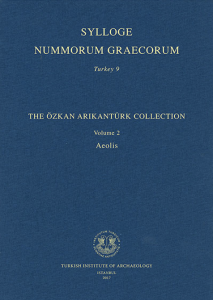
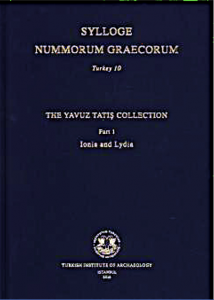
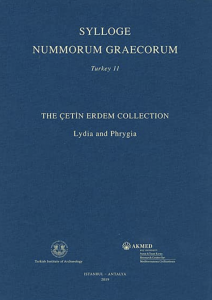
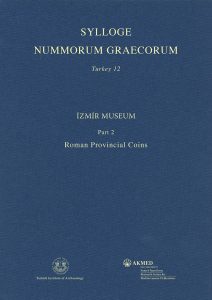
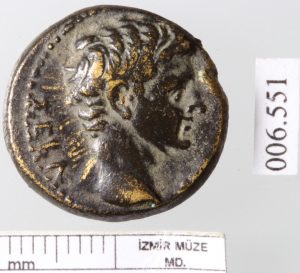
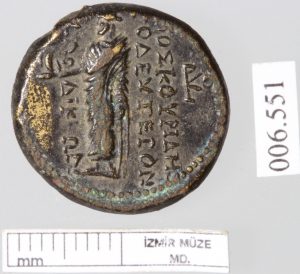
Bronze Coin of Laodicea (Phrygia), SNG Turkey 12: Izmir Museum, no. 715
SNG Türkiye Online
SNG Türkiye is also being transformed into a database project. On the one hand, the collections in the published volumes have been entered into the database and, on the other hand, new and unpublished collections are also available online. Therefore, every coin entered into the database will be available simultaneously. It is expected that the database will be live in October, 2022.
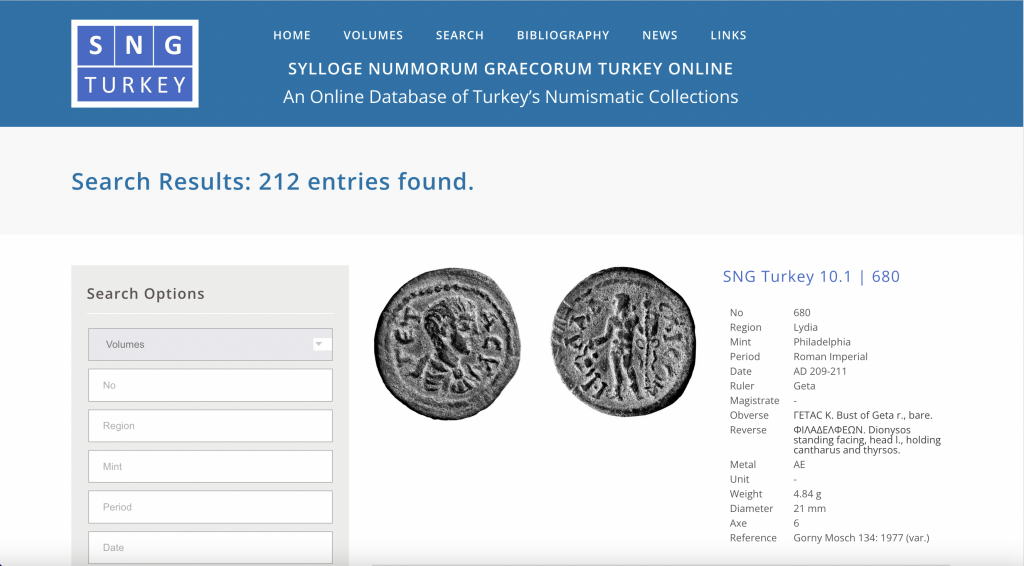
Corpus Ponderum Antiquorum et Islamicorum (CPAI)
The CPAI aims to publish Greek, Roman, Byzantine, and Ottoman balance weights in public or private museums as well as in private collections in Türkiye and abroad, to present them for study and scholarship. Within the scope of the project, fives volumes and numerous articles have already been published.
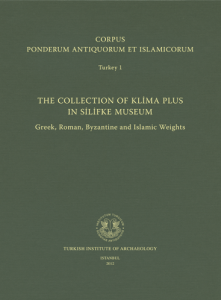
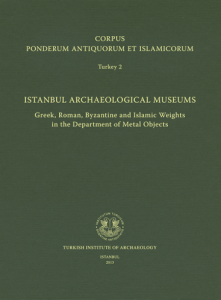
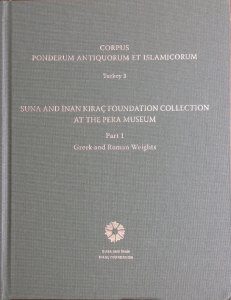
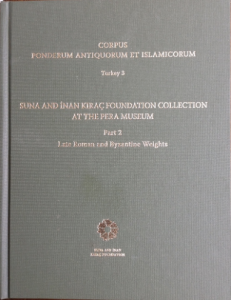
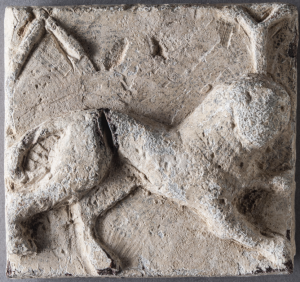
Lead weight of Lysimachia, CPAI 3/1, no. 2
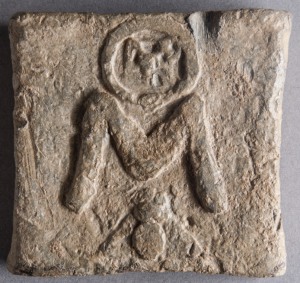
Lead weight of Miletus, CPAI 3/1, no. 54
Selected Handbooks
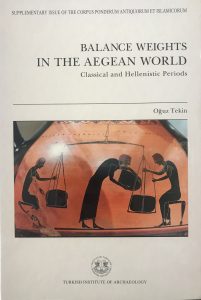
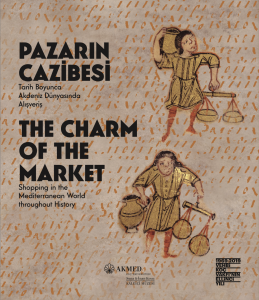
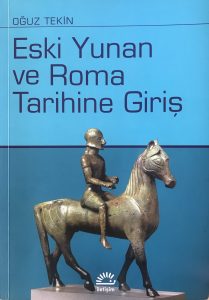
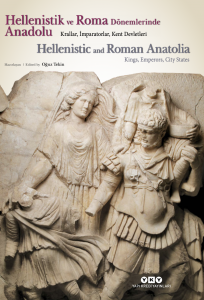
Selected Publications
Edited Volumes
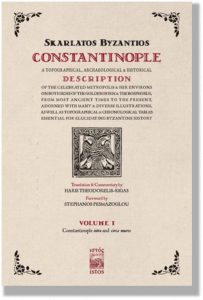
Theodorelis-Rigas, H. trans. 2019 [1851]. Skarlatos Byzantios’ Constantinople: A Critical Translation and Commentary, vol 1. Istanbul: istos yayın.
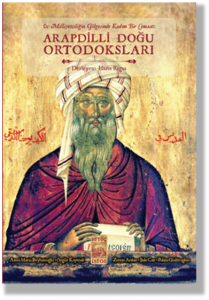
Rigas H. ed. 2018. Üç Milliyetçiliğin Gölgesinde Kadim Bir Cemaat: Arapdilli Doğu Ortodoksları [The Arabic-speaking Eastern Orthodox: An Ancient Community in the Shadow of Three Nationalisms]. Istanbul: istos yayın.
Theodorelis-Rigas, H. 2021. “From Didactic Popularization to Counterculture: Byzantium Meets the World of Comics”, in E. Alışık. ed. 2021. What Byzantinism Is This in Istanbul!: Byzantium in Popular Culture. Istanbul: Pera Museum, 264-265.
Theodorelis-Rigas, H. and Firuzan Melike Sümertaş. 2021. “Archaeology as Epic: Language, Transmission and Politics in the editions of Patriarch Konstantios I’s Konstantinias“, in E. Balta. ed. 2021. Following the Traces of Turkish-speaking Christians of Anatolia, vol. I. Department of Near Eastern Languages and Civilizations Harvard University, 103-136.
Theodorelis-Rigas, H. 2015. “Model Citizens or a Fifth-column? Greek Orthodox (Rum) Communities in Syria and Turkey between Secularism and Multiculturalism”, in A. Gorman and S. Kasbarian. eds. Diasporas of the Modern Middle East: Contextualizing Community. Edinburgh University Press, 31-69.
Medicine: Medical and Health Humanities; Healthcare Architecture and Design; and Medical Museums.
Heritage: Museum Studies; Architecture and Sensory Studies; Oral History; Cultural, Contested and Commemorative Landscapes, and Cultural Routes
Ottoman Era: Early Modern Ottoman Fortifications, Ottoman Women’s Architectural Patronage, History of Viticulture and Wine Production in Türkiye
In addition, I am a national member of ICOMOS (International Council on Monuments and Sites), the national representative for ICOFORT (ICOMOS Council on Fortifications and Military Heritage), and member of the Society of Architectural Historians, co-founder of the Koç University Medical and Health Humanities Initiative, and served as a Scientific Consultant to the Turkish Ministry of Culture and Tourism on the Restoration of the Seddülbahir Fortress, on the Gallipoli Peninsula.
Selected Publications
Monographs and Edited Volumes
Select Peer-Reviewed Articles and Chapters
with E. Doğan and J. Joy (in press). “Who owns the dead? Legal and professional challenges facing inclusive human remains management in Türkiye” in Public Archaeology.
2022. “Women in the City”, in A Companion to Early Modern Istanbul, eds. S. Hamedeh and C. Kafesçioğlu, Boston/Leiden, Brill, 86-113.
2020. “(Re)presenting Ottoman Royal Women Through “Other” Sensory Modalities”, Philanthropy in Anatolia Through the Ages, The First International Suna and İnan Kıraç Symposium on Mediterranean Civilizations, Antalya, AKMED, 203-214.
with Elifgül Doğan, 2018. “Archaeology, Museums and Tourism on the Gallipoli Peninsula: Issues of Human Remains, Ordnance, and Local Decision-Making”, Heritage in Context II, Miras 4, Archäologie und Tourismus / Archaeology and Tourism / Arkeoloji ve Turizm, DAI, Istanbul: German Archaeological Institute/ Ege Yayınları, 289-313.
with Lauren Davis, 2017. “Heritage and scent: research and exhibition of Istanbul’s changing smellscapes” International Journal of Heritage Studies, Vol. 23: No.8, 723-741. (DOI: 10.1080/13527258.2017.1317646)
2017. “Cultural Heritage and Wine in Türkiye”, Of Vines and Wines: The Production and Consumption of Wine in Anatolian Civilizations Through the Ages, Ancient Near East Supplement 51, ed. Lucienne Thys-Şenocak, Leuven, Peeters Publishers, 211-235.
with Gizem Dörter, 2016. “Fortifications in Türkiye: The Ottoman Frontier Fortresses at Seddülbahir and Upper Rumeli Kavak”, Conservation in Türkiye, eds. Z.Ahunbay, D.Mazlum, Z. Eres/ English editors: LucienneThys-Şenocak, E.Yıldırım, Istanbul, Ege Yayınları, 365-388.
with Ilgım Alaca, 2015. “Raising Awareness Through Creative Practice in the Urban Cultural Heritage of Istanbul” International Journal of Education Through Art, Vol. 11, No.1, 21-42.
2013. “Divided Spaces, Contested Pasts: The Gallipoli Peninsula Historical National Park”, Public Nature: Scenery, History, and Park Design, eds. Ethan Carr, Shaun Eyring, and Richard Guy Wilson, Charlottesville, University of Virginia Press, 281-318.
2011. “İstanbul 1910–2010 Kent, Yapılı Çevre ve Mimarlık Kültürü Sergisi City, Built Environment and Architectural Culture Exhibition” Exhibition Review, Journal of Society of Architectural Historians, Vol. 70. No. 3, 379-381.
Select Publications
Monographs and Edited Volumes
Selected Publications
Edited Volumes
“Translating Spolia. A recent discovery of fragments from the walls of Seljuk Konya and their afterlives” in I. Jevtić and I. Nilsson (eds), Spolia as Translation. Medieval Worlds of the Eastern Mediterranean. Convivium Supplementum Series, 7.
“Hospitals and Philanthropy in Seljuk Anatolia” in O. Tekin, C. Roosevelt, and E. Akyürek (eds), Philanthropy in Anatolia Through the Ages.
Selected Publications
Edited Volumes and Monographs
